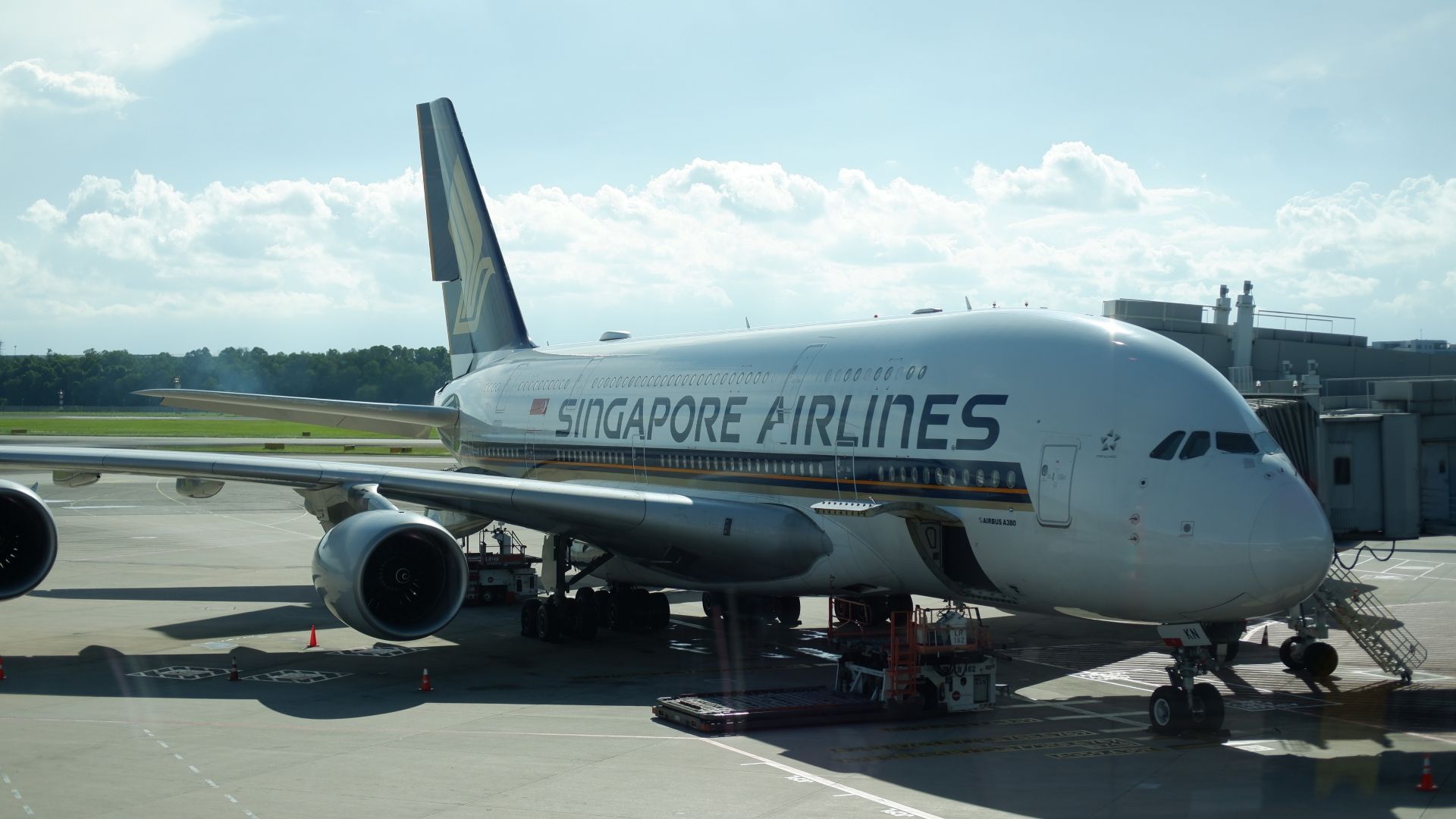World
Airbus A380: Redefining Long-Haul Air Travel Since 2005

The Airbus A380, the world’s largest passenger aircraft, revolutionized long-haul air travel when it entered service in March 2005. This full-length double-deck airliner was designed to carry more passengers than any previous model, offering a new level of comfort and space. As airlines faced increasing congestion at major airports, the A380 emerged as a solution, enabling carriers to maximize capacity without compromising passenger experience.
Airbus aimed to reshape aviation by delivering an aircraft that combined size with innovation. The A380 measures 239 feet (72.72 meters) in length and boasts a wingspan of 262 feet (79.75 meters), surpassing the Boeing 747-400, which had dominated long-haul routes since the 1970s. With configurations allowing for over 500 seats in standard layouts and up to 850 in an all-economy class, the A380 was marketed as a remedy to the growing demand for high-capacity flights, particularly on busy routes from Europe to Asia and across the Pacific.
### Current Operators and Market Performance
Despite the challenges faced by the A380 program, including declining orders, several airlines have found success with this model. Emirates remains the largest operator, maintaining a fleet of A380s that cater to premium travelers. Other airlines, including British Airways and Qantas, continue to utilize the aircraft, with plans to operate it into the 2030s. Following the COVID-19 pandemic, some airlines have reintroduced the A380 into service, indicating its enduring appeal.
### Innovations in Cockpit Design
Airbus put considerable thought into the A380’s cockpit, which reflects decades of design evolution. Pilots transitioning from other Airbus models will find familiar controls, such as side-sticks and overhead panels. The A380 introduces larger displays and additional tools essential for operating the world’s largest passenger aircraft.
The flight deck features ten large displays, an increase from previous models, and showcases an integrated Electronic Flight Bag (EFB). Airbus has also improved the onboard software, enhancing user experience for pilots. This commitment to innovation in cockpit design highlights Airbus’s goal of blending commonality with cutting-edge technology.
### Unmatched Passenger Experience
The A380’s lower deck offers the widest cabin in commercial aviation, measuring 21 feet 7 inches (6.58 meters). This spacious design allows airlines to provide a more comfortable economy experience, with configurations that may include ten seats across. The aircraft’s higher cabin altitude, set to roughly 6,000 feet, reduces fatigue on long-haul flights, making it a preferred choice for travelers.
The upper deck of the A380 further enhances passenger experience. Stretching from nose to tail, this area allows airlines to innovate with premium layouts. While many airlines, including Emirates, configure their A380s with business class seating on the upper deck, others, like British Airways, utilize both decks for business class accommodations.
### Creative Use of Space
The A380’s vast size has inspired airlines to create unique amenities for passengers. Emirates has set a standard with its upper-deck lounge and bar, which offers premium passengers a space to relax and socialize during flights. Other airlines, including Qantas and Korean Air, have developed their own lounge areas, contributing to a distinctive travel experience that sets the A380 apart from other aircraft.
Notably, Etihad Airways and Singapore Airlines have introduced some of the most luxurious first-class offerings in aviation, with extensive space and unique configurations that showcase the A380’s capabilities. These innovations in passenger amenities reflect the aircraft’s potential to enhance the flying experience.
### Cargo Capabilities and Challenges
Despite its impressive size, the A380 was primarily designed as a passenger aircraft, which may have contributed to its challenges in the market. While it excels in capacity for travelers, its cargo hold is less accommodating. The aircraft’s dimensions lead to a smaller cargo area compared to other models like the Boeing 777-300ER and 747-8. This limitation affects its ability to generate cargo revenue, particularly on routes where cargo capacity is vital.
In conclusion, the Airbus A380 has made a significant impact on the aviation industry since its debut in 2005. While the program has faced hurdles, the aircraft continues to provide a unique combination of passenger comfort, innovative design, and operational efficiency. Its legacy remains evident in the way it has transformed long-haul travel, offering a glimpse into the future of commercial aviation.
-

 Top Stories3 months ago
Top Stories3 months agoTributes Surge for 9-Year-Old Leon Briody After Cancer Battle
-

 Entertainment4 months ago
Entertainment4 months agoAimee Osbourne Joins Family for Emotional Tribute to Ozzy
-

 Politics4 months ago
Politics4 months agoDanny Healy-Rae Considers Complaint After Altercation with Garda
-

 Top Stories4 months ago
Top Stories4 months agoIreland Enjoys Summer Heat as Hurricane Erin Approaches Atlantic
-

 World5 months ago
World5 months agoHawaii Commemorates 80 Years Since Hiroshima Bombing with Ceremony
-

 Top Stories3 months ago
Top Stories3 months agoNewcastle West Woman Patricia Foley Found Safe After Urgent Search
-

 Top Stories5 months ago
Top Stories5 months agoFianna Fáil TDs Urgently Consider Maire Geoghegan-Quinn for Presidency
-

 World5 months ago
World5 months agoCouple Convicted of Murdering Two-Year-Old Grandson in Wales
-

 World5 months ago
World5 months agoGaza Aid Distribution Tragedy: 20 Killed Amid Ongoing Violence
-

 World5 months ago
World5 months agoAristocrat Constance Marten and Partner Convicted of Infant Murder
-

 Top Stories4 months ago
Top Stories4 months agoClimbing Errigal: A Must-Do Summer Adventure in Donegal
-

 Top Stories4 months ago
Top Stories4 months agoHike Donegal’s Errigal Mountain NOW for Unforgettable Summer Views









